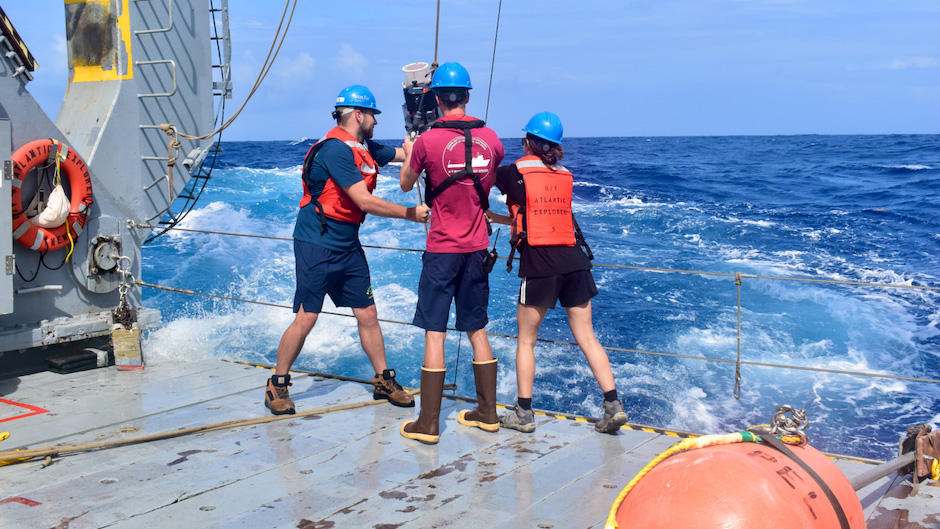A new study led by scientists at the University of Miami Rosenstiel School of Marine, Atmospheric, and Earth Science provides a more complete picture of the carbon isotope signature formed by phytoplankton in the ocean.
This new discovery could change how scientists trace food sources in animal food webs to how carbon moves through the atmosphere and ocean to predict past, present, and future climate.
The research team identified a special isotopic imprint left by photosynthetic communities living under dimly lit conditions, which may help scientists trace the importance of these communities in the broader ocean carbon cycle – something that has been largely overlooked until now.
“Our findings revealed that our basic understanding of these signatures in the ocean was incomplete,” said the study’s senior author Hilary Close, an associate professor of ocean sciences at the Rosenstiel School. “We found a new signature that may now need to be considered in a range of oceanic studies.”
Phytoplankton — microscopic marine plants at the base of the aquatic food chain — convert carbon dioxide from the atmosphere and energy from the sun into food through photosynthesis, playing a fundamental role in the oceanic carbon cycle.
During photosynthesis, phytoplankton “fix” atmospheric carbon dioxide into their cells by incorporating two stable isotopes of carbon known as 13C and 12C, in varying amounts. By measuring the ratio of 13C to 12C in seawater, or the carbon isotope ratio, scientists can study a variety of processes taking place in the ocean including modeling the global carbon cycle to understand past and future global climate.
To investigate the carbon isotope signature of phytoplankton specifically, the researchers isolated a piece of the chlorophyll molecule, a pigment used by all phytoplankton to harvest energy from sunlight. Collecting this pigment from seawater from several depths in the North Atlantic Ocean in summertime, they measured its natural carbon isotope ratios as a biomarker, or indicator, for the photosynthetic communities.
They found that phytoplankton, which can live as deep of 150 meters (492 feet) below the ocean surface, and the carbon isotope ratios in their cells vary between the top layer of the ocean, where sunlight reaches and the deeper, low-light areas of the ocean. The observed variations in carbon isotope ratios were as large as those in the geologic record attributed to major global carbon cycle events, but here represent vertical variation in the carbon isotope ratios of modern photosynthetic communities.
“These results have the potential to change how carbon isotopic signatures are interpreted more broadly in the modern ocean and should be considered in biogeochemical models, food web studies, and reconstructions of past carbon dioxide concentrations in the ocean,” said the study’s lead author Lillian Henderson, a Ph.D. student at the Rosenstiel School.
The study, titled “Variable carbon isotope fractionation of photosynthetic communities over depth in an open-ocean euphotic zone” was published in the journal Proceedings of the National Academy of Sciences.
The work was supported as part of the BIOS-SCOPE program, a five-year multi-institutional research program for the study of microbial oceanography in the North Atlantic Ocean.

